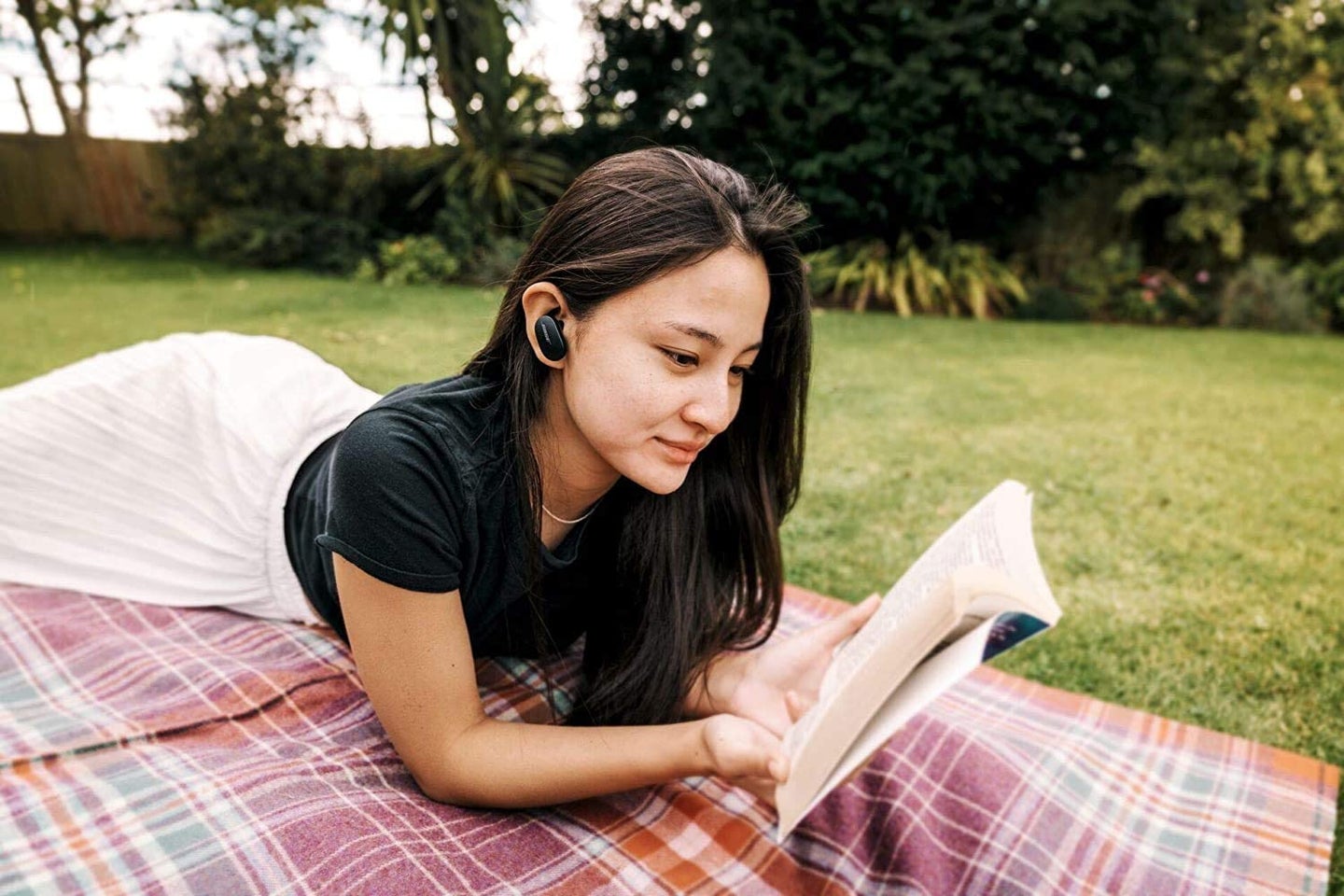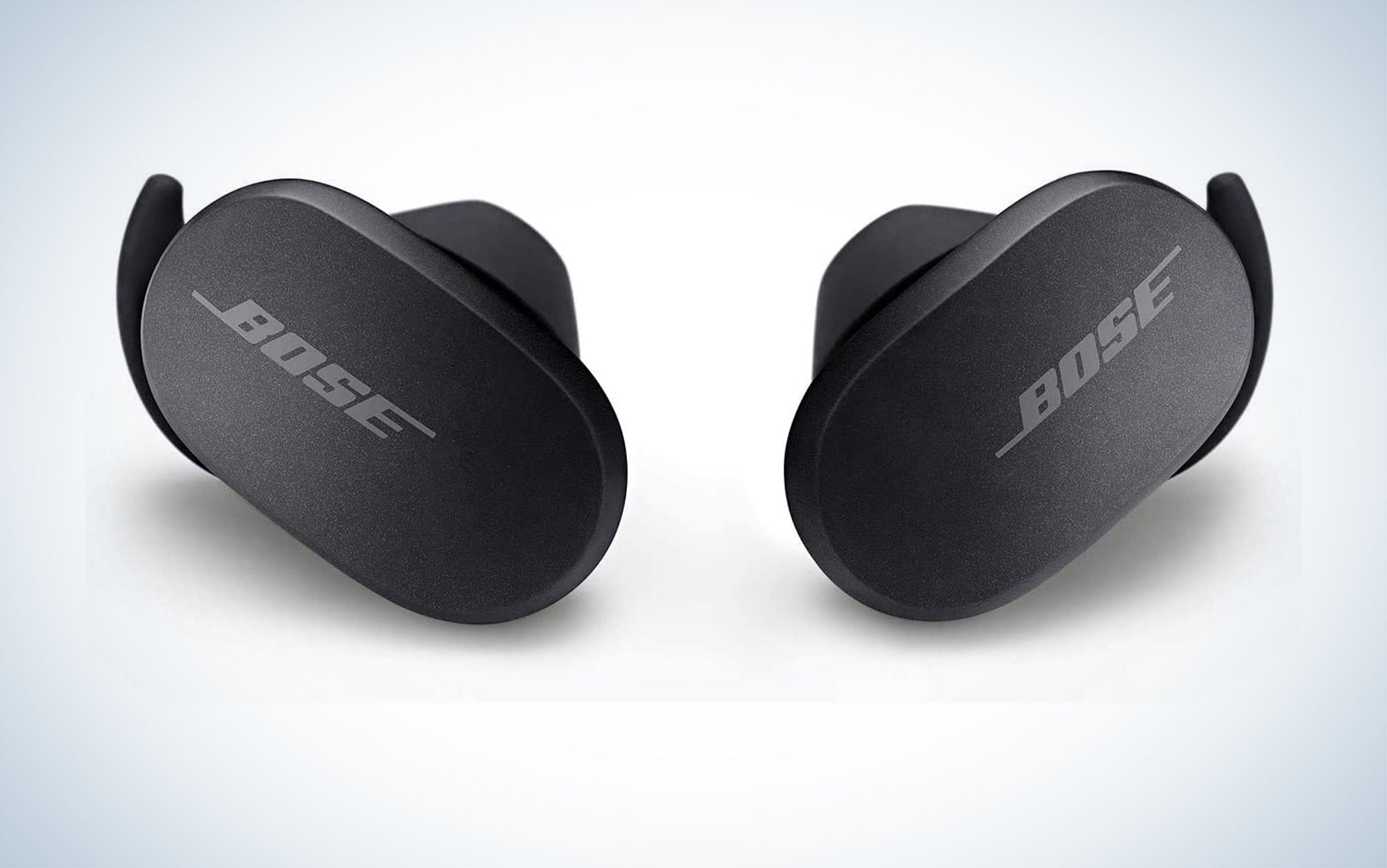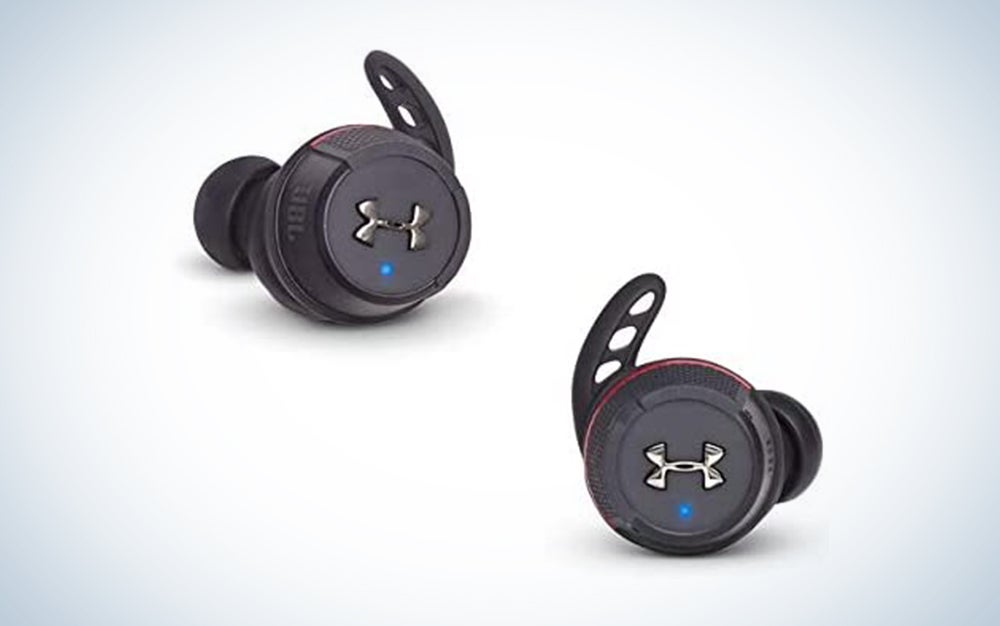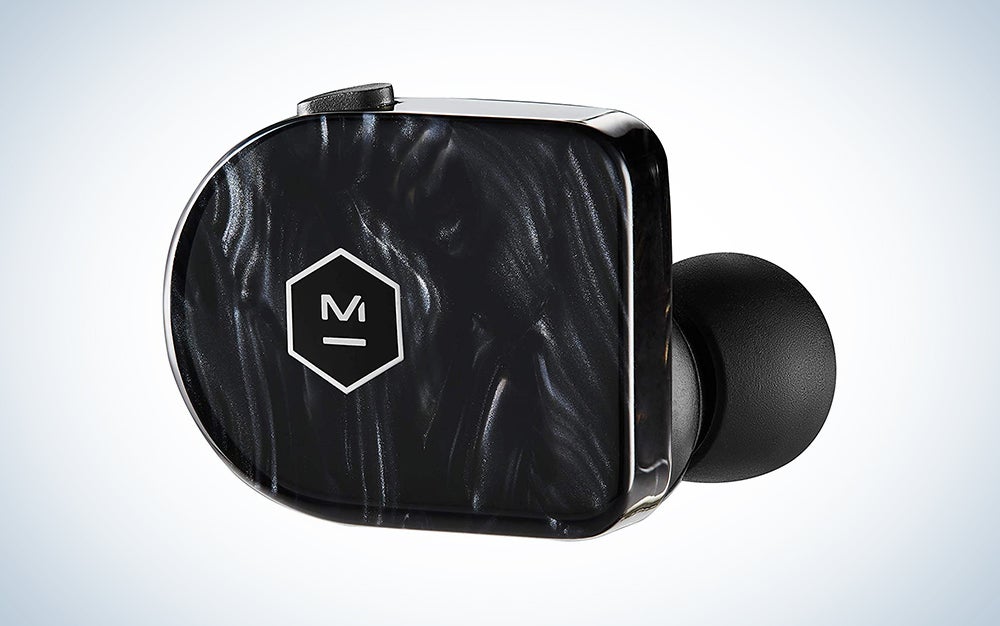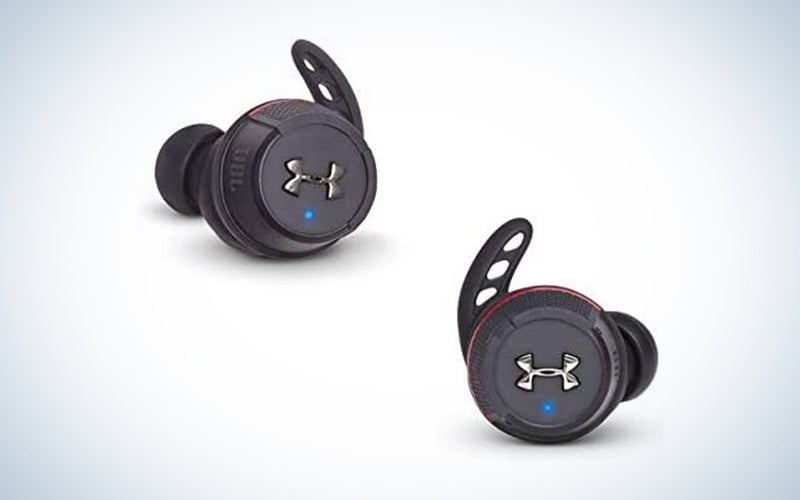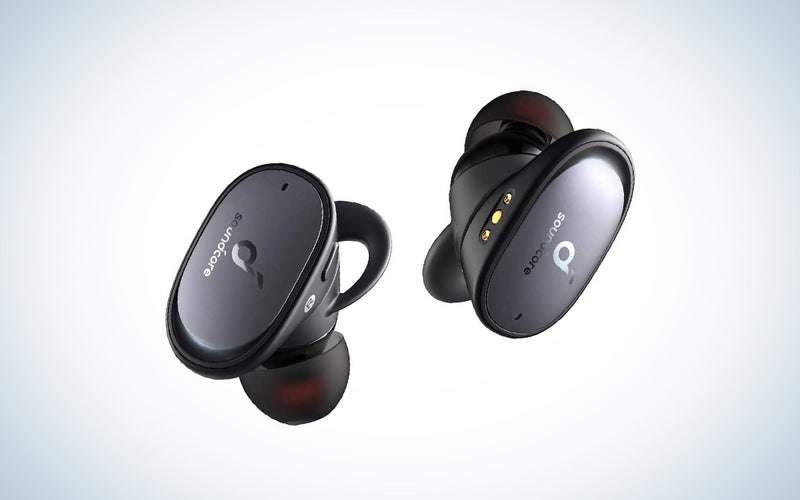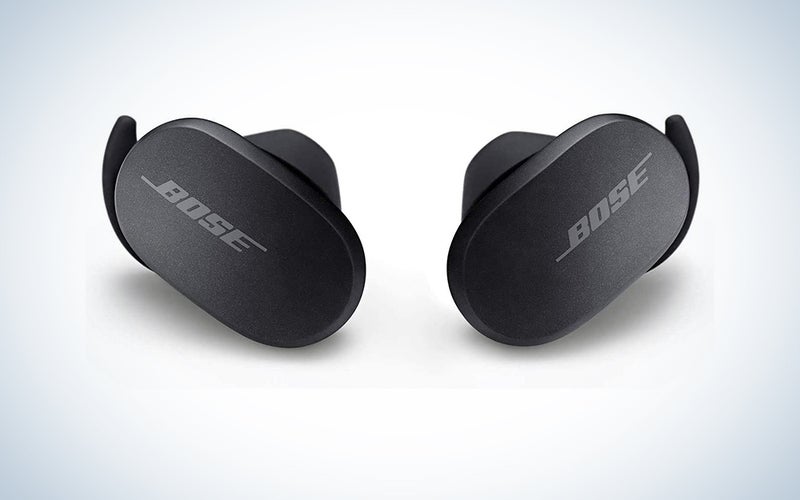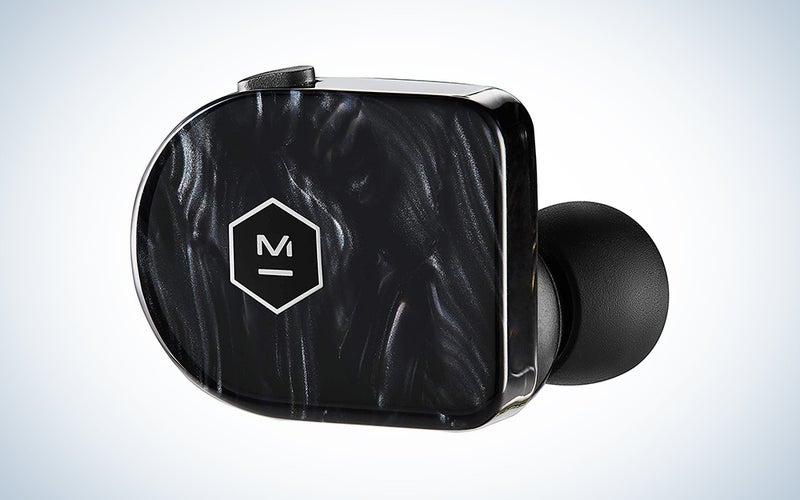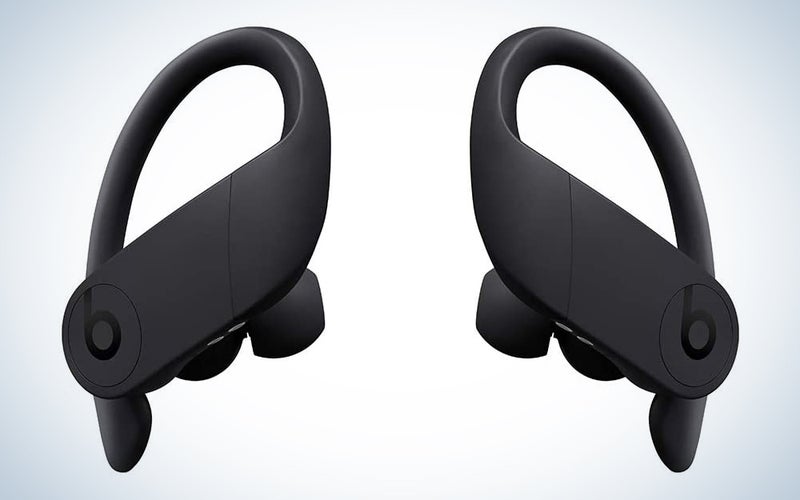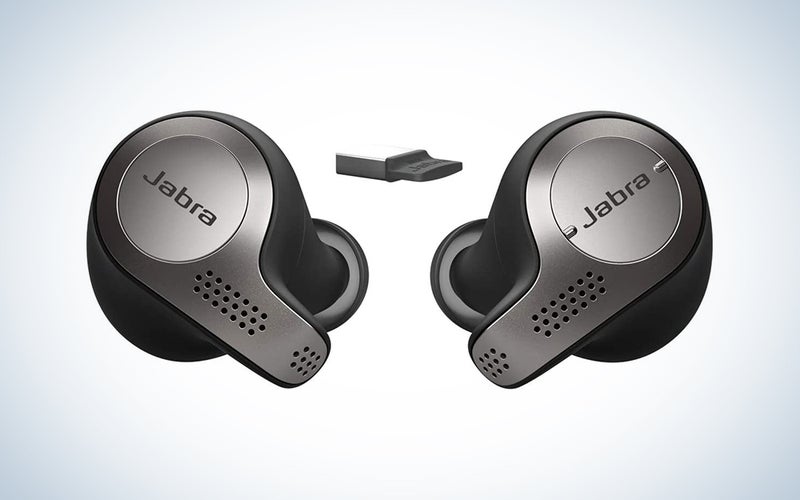We may earn revenue from the products available on this page and participate in affiliate programs. Learn more ›
Modern headphones are essential for enhancing productivity and performing a variety of common tasks, including making and taking hands-free phone calls, reviewing music and audio on the go, and canceling out distracting background noise. In the few short decades since their invention in the early 1900s, headphones have gone from being military-grade listening devices to ubiquitous parts of any music lover’s daily ritual.
- Best waterproof: JBL x UA True Wireless Flash in-Ear Sport Headphones
- Best battery life: Anker Soundcore Liberty 2 Pro True Wireless Earbuds
- Best lightweight: Bose QuietComfort Noise Cancelling Earbuds
- Best-fitting: Master & Dynamic MW07 Plus True Wireless Earphones
- Best around-the-ear: Powerbeats Pro Wireless Earphones
- Best for work: Jabra Evolve 65T True Wireless Professional UC Headset
- Best budget: TOZO T6 True Wireless Earbuds
While traditional headband-based and corded designs are some of the best headphones stationery settings like recording studios and offices, wireless earbuds are the indisputable winner when it comes to complementing activities that require listener movement like routine exercise and public transit commuting. Due to their exceptionally lightweight and lack of a cable, users can enjoy audio and move about unencumbered, and their snug in-ear and around-ear designs are secure enough to stay put during even the most strenuous of sprints. You don’t need to be an athlete to benefit from this design, either—if you’ve ever taken a phone call on the train or tried to adjust your music volume with your hands full, the motility and freedom that wireless earbuds offer can make a world of difference. Taking into account some of the most common factors and choices facing headphone users today, we’ll help you find the top wireless earbuds on the market for your specific needs.
Things to consider when looking for the best wireless earbuds
Some products telegraph their features with flashy designs, but the best wireless earbuds will integrate with a user’s routine so subtly that you could almost forget they’re there. Portability and ease of setup are key for wireless earbuds, and it’s important to choose a pair that’s as powerful as it is lightweight. Since they’re wireless, cumulative battery life is also an important consideration, and some models even come with a carrying case that doubles as a charger. If you’ll be using your Bluetooth earbuds outdoors or while exercising, you may also want to select a design that’s waterproof or that clips snugly around your ear.
Do you need waterproof wireless earbuds?
Even a seemingly trivial amount of moisture can spell the end for your sensitive electronic devices, and earbuds are no exception. Water and electronics simply don’t mix, and many an expensive device has been rendered useless by an errant spill or unexpected downpour. While it’s easy enough to keep your toaster or home stereo system out of the rain, the mobile and portable nature of headphones require them to be reliable in a variety of environments and in demanding situations where they may come in contact with lurking moisture.
If you’re using your wireless earbuds while you’re on the move—maybe at work, or during a jog on a hot day—they’ll be coming into contact with your sweat due to their small size and location on your head. In these common and unavoidable situations, a waterproof model of wireless earbuds can power through the elements along with you and resist an untimely hardware failure, ensuring that you keep your focus, enjoy your listening without interruption, and that they live to perform another day.
How long do your earbud batteries need to last?
Unlike wired headphones, which draw power from the device they’re plugged into, wireless earbuds rely upon their own onboard battery power. This feature is remarkable in and of itself given their small stature, but even amongst wireless earbud models, cumulative battery life can vary greatly. Users who will benefit most from earbuds with a longer battery life include those with lengthy commutes or traveling workdays with minimal or no access to power outlets, as well as busier individuals who use headphones for long stretches at a time and can’t be bothered to recharge constantly. Wireless earbuds with long battery life are also ideal for taking off the grid and into nature for hiking, camping, and other recreation situations.
Some models of wireless earbuds include a dedicated charging station for a one-and-done charging process, and some include a carrying case that doubles as a portable power pack to extend their playtime far beyond a single charge. In the case of the latter, this feature sets wireless earbuds far apart and beyond the capabilities of other wireless headphone form factors, which simply can’t compete when it comes to their battery life to portability ratio. These charger cases are as compact as the earbuds themselves, too, and usually recharge the headphones via a small series of metal contacts.
For typical wireless earbuds, battery life can range anywhere from roughly eight hours up to dozens of hours, when factoring in the recharging capacity of the carrying case. With a spectrum this wide, it’s important to take into consideration the intended environment and frequency of use. If nothing else, choosing a model with a longer battery life may be worth it simply to avoid charging up your headphones more than once a week. So check the specs on the models you’re considering before you buy.
How light should your wireless earbuds be?
Relative to even the smallest pair of traditional headphones, the incredibly lightweight of wireless earbuds puts them at a clear advantage above other designs. This is especially true in environments where added bulk may be prohibitive, including during commuting of any type. Air travel requires strict adherence to baggage weight limitations, and backpacks and laptop bags used for going between work and home also have a finite capacity even before the toll of excess weight on your body is taken into account. Even when factoring in the weight of their included carrying case, wireless earbuds generally weigh less than one pound, which, when combined with their minute form factor, makes them virtually nonexistent next to books, tablets, phones, computers, and any other common essential items you might have in tow.
One of the best things about wireless earbuds is that they’re so light that you can comfortably wear them for longer periods than other designs and enjoy a unique freedom of motion that doesn’t even require factoring in storage space. Gamers, remote workers, and other power users will enjoy the comfort of a lighter device. And athletes will enjoy the negligible amount of added weight that comes from using wireless earbuds in situations where aerodynamics and speed are paramount. Unlike most every other portable listening device, wireless earbuds simply do their job so well that you hardly notice them.
Two types of wireless earbuds: around-ear, in-ear
Wireless earbuds can be generally broken down into two categories based on form factor centered around how they’re worn. In-ear models sport a design akin to earplugs and are the most lightweight and compact option, while around-ear models utilize some type of fastening design to secure themselves to the outer edge of the user’s ear. Each design has its advantages, and which one you should consider will come down to your specific intended use.
In-ear designs allow for very quick insertion and removal and for smooth operation by extension thanks to the simplicity of their form factor. Since they’re generally smaller than around-ear designs, they tend to be slightly more compact, which makes them a winner when every square inch of your bag and pocket storage space needs to be considered, however, their smaller size and lack of adjustability may make for a less comfortable fit if you have smaller ears.
Around-ear designs offer the potential for enhanced adjustability and user-friendliness thanks to the added surface area and resulting potential for extra buttons to toggle between music, calls, and volume adjustments. They’re usually crafted with a wing or other fastening mechanism to sit securely on and around the user’s ear, giving them a clear advantage over in-ear designs when it comes to usage during high-impact workout and other active pursuits. On the other side of the coin, they can be bulkier and slightly heavier as a result, which may make users tire of extended periods of uninterrupted use depending on the fit.
Earbuds for work: How well can your clients and coworkers hear you?
A major factor to consider with wireless earbuds for work is whether they contain a microphone, as well as the number of microphones onboard, and what type of environmental noise cancellation they use, if any. Some models rely upon a single microphone to capture your voice during phone calls and recordings, and others use an array of microphones to assist in ambient noise-cancellation and enhancement of your speech. Others don’t include an onboard microphone at all—which simply won’t work for folks who find themselves on Zoom meetings and client calls often. Since wireless earbuds are so often paired to a phone, and since microphone-enabled earbuds are so readily available at a comparable price point, skipping the microphone is generally not advisable unless you have good reason to do so.
Another consideration for work earbuds is connectivity. Bluetooth wireless technology is constantly evolving and being improved, with the most recent innovations including increased range and enhanced conservation of device battery life over previous generations. Wireless speakers and earbuds typically boast a connection range of around 30 feet, which is more than enough if your phone is by your side and plenty still if you’re charging your phone and need to walk away from it while on a call. Another relatively new option that’s still a little hard to come by in the market is the ability to connect a pair of wireless earphones to multiple devices at once. This feature may prove to be indispensable in certain applications, particularly for users who own both a work phone and a personal phone, or for those who pivot between their computer and phone for audio streaming, since such earbuds can juggle multiple tasks without constant reconnection.
Best waterproof: JBL x UA True Wireless Flash in-Ear Sport Headphones
Amazon
These JBL earbuds feature rugged IPX7 waterproof technology, boast a 25-hour battery life, and come with an aluminum charging case for enhanced portability. Branded in partnership with Under Armour and designed specifically with sweat and exercise in mind, true wireless earbuds are tough enough to get you through even the most strenuous workouts.
Best battery life: Anker Soundcore Liberty 2 Pro True Wireless Earbuds
Amazon
Custom-tailored HearID personal equalization, 22 EQ presets, and a four-microphone voice isolation and noise reduction system round out these Anker earbuds. The kicker here is the eight hours of continuous play you can get from a single charge, plus the four more full charges provided by the case, which altogether gets you a whopping 40 hours of play time.
Best lightweight: Bose QuietComfort Noise Cancelling Earbuds
Amazon
Packed with 11 levels of noise-canceling tech, these Bose earbuds are set apart by their impressive feature set and stunningly lightweight of 0.3 ounces each. The Bose QuietComfort earbuds hold six hours of play time on a single charge, plus 12 more from the case, and are water-resistant to IPX4 standards.
Best-fitting: Master & Dynamic MW07 Plus True Wireless Earphones
Amazon
This pair of in-ear earbuds come with three interchangeable silicone fit wings to assist users in getting the perfect fit, setting them apart from other wireless earbuds of this form factor. Each charge from the case renders 10 hours of playtime, and the Master & Dynamic MW07 earbuds two beamforming microphone arrays work in concert to provide crystal clear sound during phone calls.
Best around-the-ear: Powerbeats Pro Wireless Earphones
Amazon
These Powerbeats Pro earbuds are perfect for workouts thanks to their adjustable ear hooks and water-resistant construction. They’re equipped with an Apple H1 headphone audio chip and pair to your phone with a single touch, and you can even use one at a time if you need to keep an ear free.
Best for work: Jabra Evolve 65T True Wireless Professional UC Headset
Amazon
The Jabra Evolve 65T headset’s claim to fame is its UC certification, but it goes above and beyond with its ability to pair to two devices at once. Ideal for business and travel, these earbuds will perform up to five hours on a single charge and can extend to 15 more via the charging case.
Brands to know
The companies listed here all make wireless earbuds and other electronic devices, but they each have a unique history and relationship with audio that sets it apart from its competitors. Some are long-time industry players with decades of experience, and others are newcomers actualizing new ideas to fill gaps in the market. Here’s a closer look at some of the brands included in this article.
Bose
Bose Corporation, named after founder Amar Bose and founded in 1964, is a long-standing audio company that gained major traction in the 1970s with the introduction of their unique multi-speaker home stereo systems. Their audio research and the subsequent products developed thereof have touched nearly every listening environment over the decades, from automobiles to headphones and beyond. In 2011, Amar Bose donated the majority of the company’s shares to his alma mater, MIT, in hopes of advancing their research.
Master & Dynamic
Master & Dynamic was founded in 2013 in New York City by Jonathan Levine and Vicki Gross after Levine’s son experienced difficulty finding appealing headphones. Their initial design philosophy drew inspiration from natural, durable, and otherwise unconventional materials to create a unique product line that stands apart from the rest.
Anker
Founded by ex-Google software engineer Steven Yang in 2011, Anker is a Chinese electronics company based in Shenzhen, Guangdong. The company’s major products include power banks, charging accessories, and USB hubs, but they also produce smart home appliances for the Eufy brand, as well as earbuds such as the ones included in this article under the brand name Soundcore.
Best budget wireless earbuds: What you get for under $50
The wireless earbuds can be pricey. There are still some solid options when it comes to the best cheap wireless earbuds, but you’ll more than likely find yourself making a couple of sacrifices. Battery life on these budget models is usually acceptable, but durability—particularly in the realms of weatherproofing and material integrity—usually takes a hit. Some models, such as the T6 True Wireless Earbuds from TOZO, do include waterproofing and other features found on higher-end models, but you may get these durability perks at the expense of comfort or ergonomics.
FAQs
Q: Who has the loudest wireless earbuds?
If you’re in search of wireless earbuds that will deliver every bass note and ballad with high, stunning volume, we recommend the JBL x Under Armour True Wireless Flash in-Ear Sport Headphones. While some headphones monitor volume and keep it lower, this pick is for those who want to jam out at maximum volume.
Q: Which type of earphone is best?
For those who want to block out additional noise and have their voice come through loud and clear, you’ll want a reliable earbud that doubles as an earphone. Your pick should have sound selection technology to tune out any background noise, so your calls are seamless and hassle-free. The Powerbeats Pro Wireless Earphones wrap around your ear for a comfortable fit that can go from work calls to high-intensity workouts in no time.
Q: What are the best wireless earbuds?
Though the “best” determination is of course, subject to preference, the Bose QuietComfort Noise Cancelling Earbuds check all the boxes when it comes to wireless earbuds. They offer incredible noise-canceling technology, stunning sound quality, and a comfortable design—you simply won’t want to take them off.
A final note on the best wireless earbuds
Headphones have come a long way to make it to where they are today: rugged, compact, and powerful audio amplifiers that can literally recharge themselves in your pocket. Noise-canceling models with long battery life or multiple connectivity options are ideal for work and professional situations, while over-ear and weatherproof designs are better suited for visits to the gym and sprints around the block. Between phone calls, meetings, commutes, and workouts, a set of wireless earbuds is guaranteed to make at least one facet of your life simpler, smoother, and maybe even a bit more fun.
